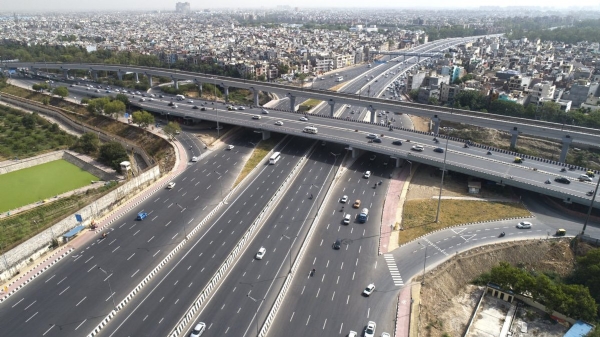Why Road infrastructure is critical for India's growth story
That quote can easily describe the ability of good road infrastructure to transform a country’s economy. American road construction saw a huge boom in the Eisenhower administration from 1952 to 1960 before JFK took over.
Total Views |
“American roads are not good because America is rich, but America is rich because American roads are good.” This is a quote by former US president John F. Kennedy (JFK). The Indian minister of road transport and highways, Nitin Gadkari, has used this quote several times to explain the importance of rapid road building in India to the parliament and the country.

That quote can easily describe the ability of good road infrastructure to transform a country’s economy. American road construction saw a huge boom in the Eisenhower administration from 1952 to 1960 before JFK took over.
Dwight D. Eisenhower was the supreme allied commander during WW2. As one, Eisenhower understood the importance of logistics. ‘As the saying goes, amateurs think of tactics, and generals think of the logistics.’ Eisenhower saw, how better German tanks couldn't defeat the USSR because of the absolute lack of roads in eastern Europe at the time. Eisenhower knew that roads will play an absolutely important role in not just war but in a country’s economy. This led to the creation of the road network across the USA. Roads are essential to transfer goods and people from one place to another. Good roads create access to various places for people across the country. Good roads also create the possibility of transferring goods from one end of a country to another. Road network helps create jobs at a scale that is unparalleled to any infrastructure. The building of roads itself requires a large pool of labor, which also means huge employment opportunities in far-flung areas of any country. This also helps move the population’s dependence on agriculture to infrastructure, which is also crucial in order to provide upward social mobility.
But roads provide much more than direct employment. Only good roads can reach every village and every town in the country. Good roads provide access to the markets for rural and mountainous parts of a country. Even in a country like India, with a vast railway network, all villages are not connected by the railway and it cannot be connected by the railway. But all the villages in India are now being connected by road infrastructure. This connectivity does and will provide people with better access to the urban centers of India, it will make it easier for people from rural India to sell their goods and services to the urban centers of India. This provides them with access to humongous markets like Mumbai and Delhi with cheap modes of transportation. This also makes the consumer in Urban India better off. Urban taxpayers' money gets spent to build roads in the rural areas of any country. But the benefits of these roads are not just for the rural citizens but also for the urban ones. The urban citizen gets to enjoy goods from rural India at a cheaper price and for all days of the year. Urban India also gets access to the large labor force from rural India, which works for considerably lesser wages than the urban workers. This in turn also reduces the prices for goods and services across the country and keeps inflation low while helping the economy grow at a higher rate because of employment opportunities for a large section of the society, that is rural India.
Roads also create access for people across the country to cultural, and religious places. This helps make those towns, centers for tourism. Such towns also create employment opportunities for the people from neighboring villages. We have seen such examples across India in recent times. One can look at the Statue of Unity and the development of tourism in Kevadia village, especially with the construction of over 80km road from Vadodara. One can look at the construction of the Atal Tunnel near Manali, which has not only reduced the travel time from Manali to Rohtang pass by many hours but has also created tourism opportunities for places like Sissu and Keylong, about which people in Urban India were largely unaware of. Lastly and most importantly, the people of the North-East have seen the most transforming 7-8 years when it comes to construction of roads. Bridges like Bogibeel and Dhola-Sadiya bridge have transformed the region and propelled it by a few decades when it comes to road infrastructure.
The old notions of traveling to north eastern India by riding an elephant or a wooden boat on a river are now long gone. Now, any vehicle from any part of India can drive through the roads and bridges across the North East. This has helped unlock the potential of the North-East to sell its products and services not just to the rest of India but to the rest of the world. If one wants to understand why the construction of roads is important and why it is crucial for any country and its economy, one simply has to visit the North East or mountainous states of India like Himachal Pradesh and Uttarakhand. In those regions, one can see people’s lives being transformed because of road construction.


